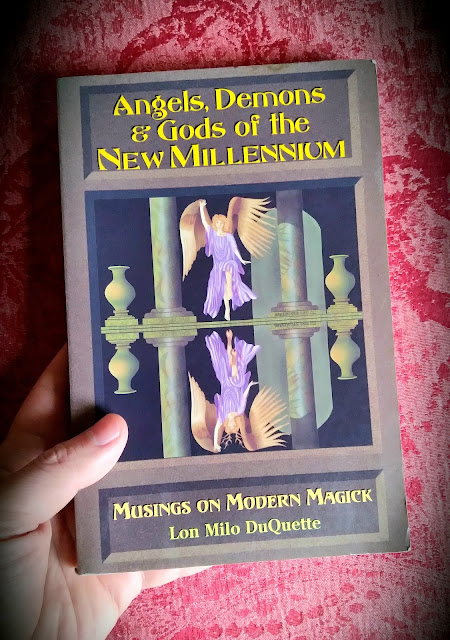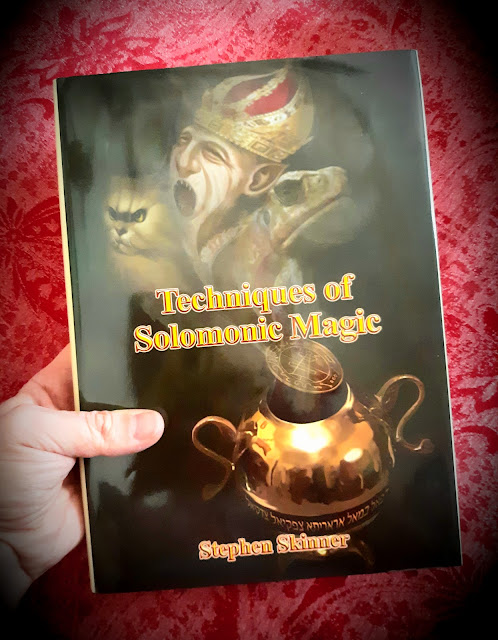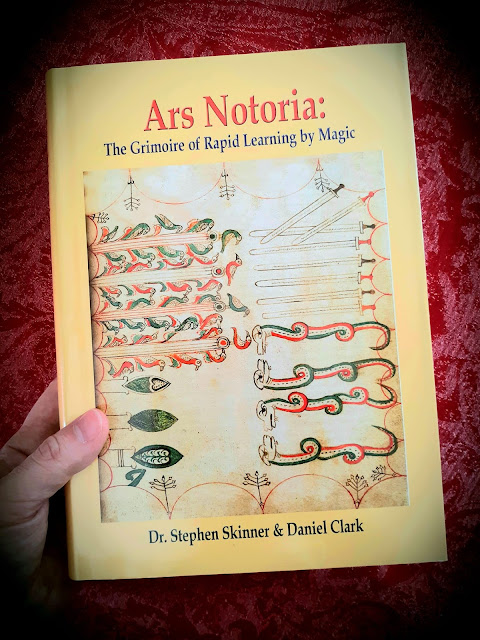 |
| The Lesser Key of Solomon. Lemegeton Clavicula Salomonis. Grimoire. Joseph H. Peterson |
I'm reading through Joseph H. Peterson's edition of "The Lesser Key of Solomon."
Compiled
from original manuscripts and fragments in the British Museum Library,
Joseph Peterson's new presentation is the most complete and accurate
edition of this famous magical grimoire.
A widely respected scholar and archivist of occult texts, Peterson goes to great length to establish the provenance of each part of The Lessor Key of Solomon, and possible derivative works, including critical analyses of all major variations, utilizing fresh translations of earlier magical texts such as Johann Trithemius's Steganographia, The Archidoxes of Magic by Paracelsus, and newly discovered Hebrew manuscripts of the original Key of Solomon.
Abundantly illustrated, Peterson includes reproductions of the original magical circles, tools, and seals of the spirits with variations of certain drawings from various sources and notae missing from earlier editions.
This definitive edition of The Lesser Key of Solomon includes:
A widely respected scholar and archivist of occult texts, Peterson goes to great length to establish the provenance of each part of The Lessor Key of Solomon, and possible derivative works, including critical analyses of all major variations, utilizing fresh translations of earlier magical texts such as Johann Trithemius's Steganographia, The Archidoxes of Magic by Paracelsus, and newly discovered Hebrew manuscripts of the original Key of Solomon.
Abundantly illustrated, Peterson includes reproductions of the original magical circles, tools, and seals of the spirits with variations of certain drawings from various sources and notae missing from earlier editions.
This definitive edition of The Lesser Key of Solomon includes:
- Goetia—The ritual invocation of evil spirits and Solomons devices for binding them
Theurgia Goetia—Continues the study of spirits that are “partly good and partly evil”
Ars Paulina—Outlines the good spirits or angles governing the hours of the day and the signs of the zodiac. The text is purported to have been discovered by the Apostle Paul after he had been snatched up to heaven and includes “The Conjuration of the Holy Guardian Angel.”
Ars Almadel—attributed to an Arab of the same name, this text describes twenty beneficial sprits that govern the zodiac
Ars Notoria—With roots that go back to the 13th century Latin manuscripts, and probably even early oral traditions, this collection of orations and prayers in interspersed with magical words said to have mystical properties that can impart communion with God and knowledge of divine and human arts and sciences.
Appendices, which include addenda found in the Sloan Manuscript 2731, Johan Weyer’s Psuedomonarchia demonum
List of Sources
Index






